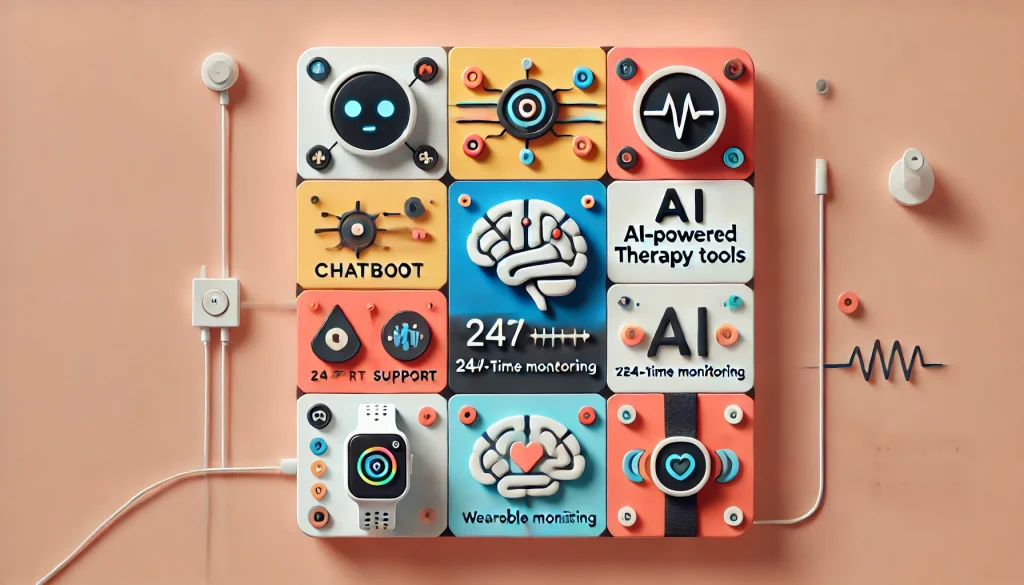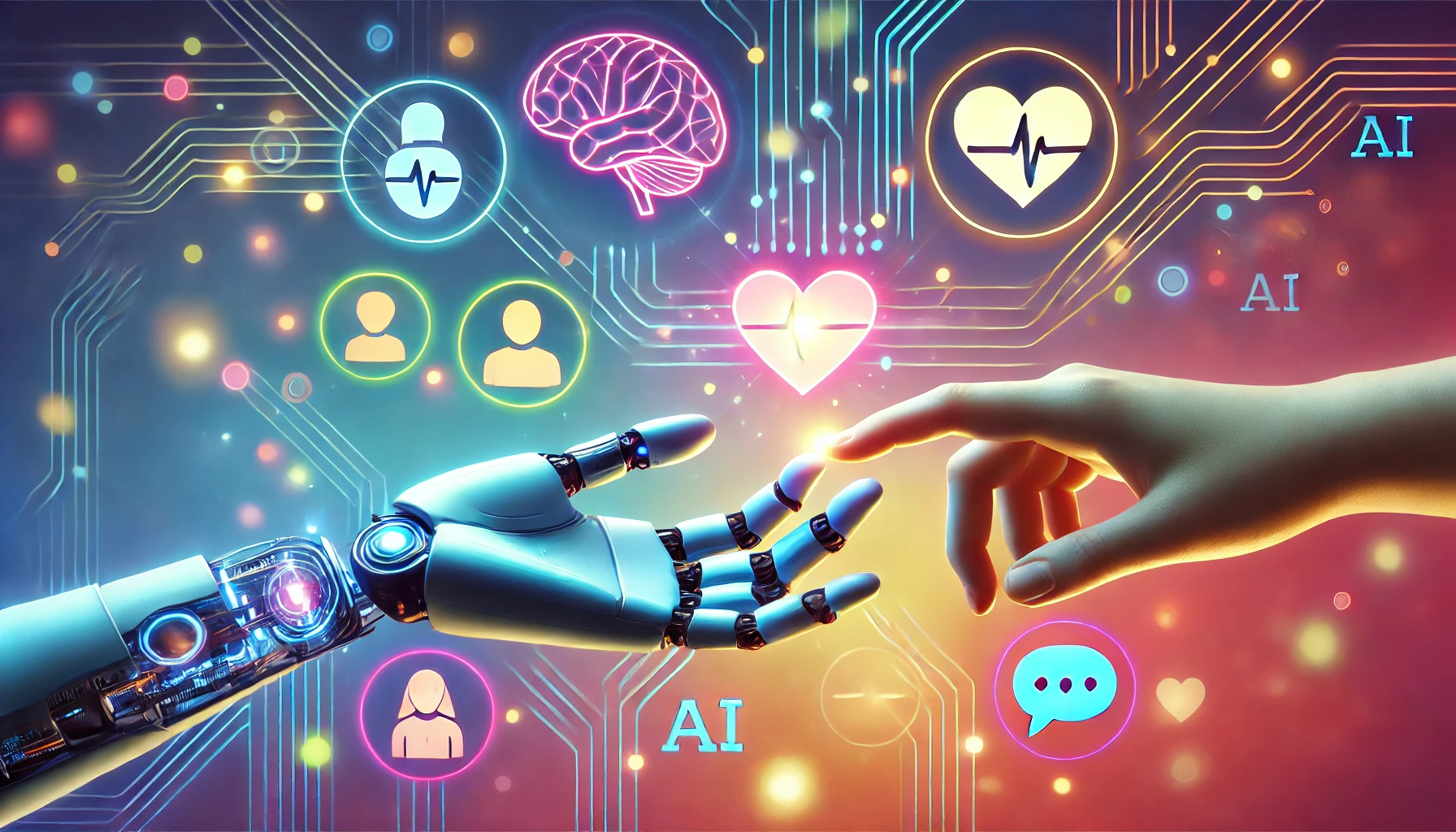5 Ways AI-Powered Therapy Tools Are Revolutionizing Mental Health Support. Artificial intelligence (AI) is transforming the landscape of mental health care, making support more accessible, personalized, and efficient. These tools, once a futuristic concept, are now providing tangible solutions for people around the world. In this article, we explore how AI-powered therapy tools are revolutionizing mental health care, their benefits, limitations, and what the future holds.
1. On-Demand Mental Health Support
One of the greatest benefits of AI-powered therapy tools is their availability. Unlike traditional therapy, which often requires scheduling and waiting, AI chatbots like Woebot and Wysa provide immediate support 24/7. These tools use natural language processing (NLP) to understand user inputs and respond with evidence-based techniques such as cognitive-behavioral therapy (CBT).
For instance, someone experiencing a stressful moment at midnight can turn to an AI-powered chatbot for coping strategies. While not a substitute for professional therapy, these tools offer a safe space for people to share their feelings and find quick, actionable advice.
The stigma associated with seeking therapy is another hurdle these tools address. AI-powered therapy offers a judgment-free environment, encouraging more people to seek help without fear of being judged or misunderstood. This increased accessibility is especially important in promoting early intervention for mental health issues, reducing the likelihood of escalation.
2. Personalized Care Through Data Insights
AI excels at analyzing large datasets to identify patterns and provide personalized care. For example, mental health apps like Calm and Headspace leverage AI algorithms to recommend mindfulness exercises and meditation techniques based on user behavior and preferences. Wearable devices integrated with AI can monitor physical indicators like heart rate and sleep patterns, offering insights into mental health trends.
By identifying individual stressors and habits, these tools deliver tailored solutions that improve the effectiveness of mental health routines. For example, an app might notice increased stress levels in the morning and recommend grounding exercises to start the day with a calm mindset. However, this level of personalization also raises concerns about data privacy and security.
To understand how personal data can be monetized or misused, read The Hidden Cost of Free Apps. These insights highlight the importance of robust data security measures in AI-powered tools, ensuring users’ sensitive information is protected.
3. Bridging Gaps in Access
Access to mental health care remains a significant challenge, particularly in underserved communities or regions with limited resources. AI-powered therapy tools are bridging this gap by offering affordable and scalable solutions. These tools are especially impactful in areas with a shortage of mental health professionals, providing initial support and guiding users toward appropriate care.
For multilingual communities, AI tools with language capabilities help break barriers, ensuring individuals from diverse backgrounds can access the support they need. By using conversational AI, users can communicate in their preferred language, enhancing their comfort and engagement.
Additionally, AI-powered tools can extend their reach to rural and remote locations, where traditional therapy services may not be available. This scalability is critical in addressing global disparities in mental health care access.
4. Real-Time Emotional Monitoring
Advanced AI systems can analyze voice tone, facial expressions, and text patterns to detect emotional changes in real time. Integrated with wearables, these tools monitor physiological signs like heart rate variability, stress levels, and sleep quality. For instance, an AI-powered app might notice a user’s stress level is rising and suggest immediate relaxation techniques or notify a caregiver if necessary.
Real-time emotional monitoring allows for proactive interventions, reducing the risk of emotional crises. For example, a wearable device could alert a user to take a break during a particularly stressful day, preventing burnout.
To see how global organizations are embracing technology for mental health and well-being, explore the World Health Organization’s initiatives on mental health. These efforts demonstrate the critical role technology plays in improving mental health care worldwide.
5. Human-AI Collaboration in Therapy
AI-powered therapy tools aren’t designed to replace therapists; instead, they enhance the therapeutic process. Therapists use AI-generated insights to track patient progress, identify patterns, and tailor treatment plans more effectively. For example, an AI tool might highlight recurring themes in a patient’s journaling app, providing valuable data for therapy sessions.
Hybrid models that combine AI tools with human expertise ensure the empathy and intuition of a human therapist are complemented by the precision and efficiency of AI. This collaboration results in more comprehensive care, offering the best of both worlds.
6. Ethical Considerations and Limitations
Despite their promise, AI-powered therapy tools come with ethical concerns and limitations. Privacy risks are a major issue, as mental health data is highly sensitive. Robust encryption and secure data handling are essential to maintain user trust.
Another challenge is the lack of human empathy in AI interactions. While these tools simulate understanding, they cannot replicate the emotional depth and connection of human therapists. Users should be cautious about relying solely on AI for complex mental health needs.

Future Trends in AI and Mental Health
The future of AI-powered therapy tools is promising, with exciting advancements on the horizon:
- Immersive Therapy: Combining AI with virtual reality (VR) to create engaging and interactive therapy sessions.
- Predictive Analytics: Using AI to predict mental health crises before they occur, enabling preventative care.
- Global Reach: Expanding AI’s capabilities to address cultural nuances and provide tailored solutions worldwide.
- AI-Driven Collaboration: Developing AI tools that integrate seamlessly into therapy practices for enhanced care.
Conclusion
AI-powered therapy tools are revolutionizing mental health care, making it more accessible, personalized, and effective. These tools provide immediate support, tailored insights, and scalable solutions for individuals across the globe. While challenges like privacy and empathy remain, the potential for AI to complement traditional therapy is undeniable. By embracing this collaboration, we can build a future where mental health care is inclusive, ethical, and impactful.





Leave a Reply